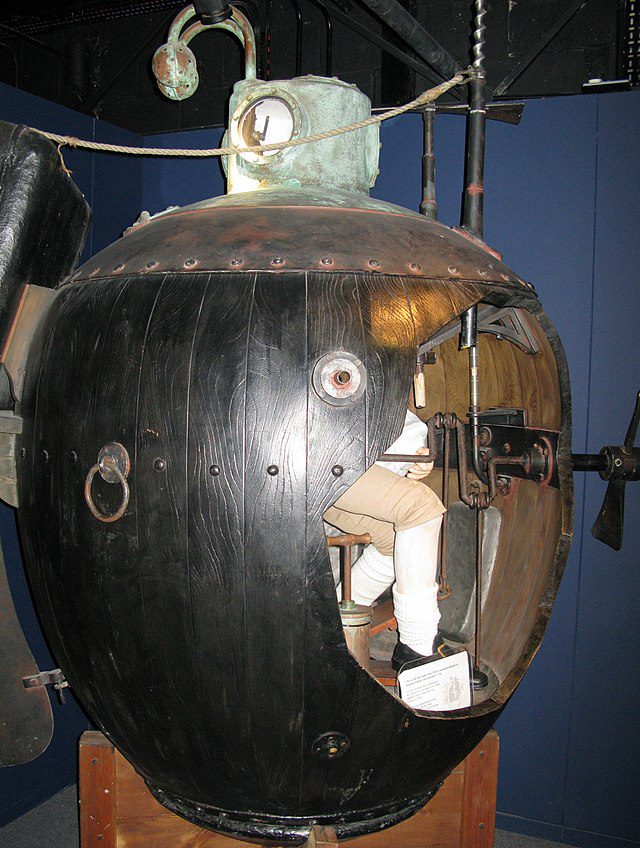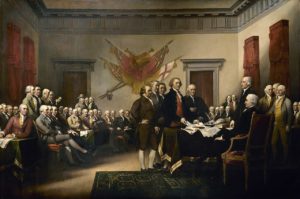Top 15 Facts about the American Revolution
Top 10 Facts about the American Revolution
Originally published by Pamela in May 2020 and Updated by Ruth in July 2022
The Revolutionary War was a rebellion on colonialism, commonly referred to as the ‘American Revolution’. It took place between 1775 and 1783.
The revolution arose from rising pressure between inhabitants of Great Britain’s thirteen North American territories and the imposing administration, which corresponded to the British crown.
The conflict between British soldiers and colonial troopers in Lexington and Concord kicked off armed clashes, in April 1775. The subsequent summer, the insurgents were pursuing a full-scale war as they fought for their sovereignty.
In 1778, France joined the American Revolution on the side of the colonists, converting what had been, in essence, a countrywide war into an international clash. After French aid assisted the Continental Army, they forced the British to surrender in 1781 at Yorktown in Virginia.
The Americans had successfully attained their independence, nonetheless, fighting would not officially conclude until 1783.
1. The war did not end in 1781 despite the American’s success.
One of the fallacies booklovers have about the American Revolution is that it concluded after the British surrender in 1781 at Yorktown in Virginia. You would expect a complete halt of war-related activities however, that was not the case.
The year 1782 was miscellaneous with hopefulness and affix with bloody clashes. Inhabitants took the news of Yorkshire differently as some were not pleased with the exit of the British. For them, the contemplation of the British deserting North America sent them into acts of retribution and violence.
South Carolina, particularly, saw an increase in antagonistic incidents where warring neighbours bearing opposing loyalty lay cordon to each other’s possessions. Houses and barns were set ablaze, and families were under duress. Local newspapers reported on the predation by marauders that took the lives of many.
2. Colonies seeking rights to free trade started the war
The war came about after many years of issues involving ‘The Red Coats’ (The British Empire) and the colonists of North America.
This was particularly true of the Roanoke, after the French and Indian War.
There were thirteen territories, and the people living in the colonies disliked many of the British Government directives.
For the longest time, the British government were the final say on which nations could buy and sell with the colonies. It was evident that the colonies would have wished to decide for themselves, what they sought was free trade.
3. Not all colonists wished to depart from British Rule.
The Tories, who were loyal to the British kept on. They did not wish to change their stand.
Prior to the American Revolution majority of Americans were Loyalists, however, after the revolution most were Patriots. Those considered Whigs or patriots sought independence.
The colonialists responded with letters expressing how they felt in the wake of all this — some prints included Common Sense by Thomas Paine. Leaders who supported the push for independence were John Adams, Thomas Jefferson and Benjamin Franklin.
4. Native Americans and Loyalists Fought on the British Side
Though some Native Americans battled alongside the colonizers, about 13,000 of those who were directly involved in the conflict battled for the British side. This led to squabbles and divisions inside native tribes, most noteworthy among the Mohawk.
About 25,000 Nationalists joined the majority of Native Americans who were also against the revolution and stayed devoted to the British Crown. Approximately 60,000 Nationalists relocated to the US throughout and even after the war.
5. Concord and Lexington are where it all started.
The initial clashes of the American Revolutionary War were Concord and Lexington. The year 1775 saw one of the first major conflicts at the Battle of Bunker Hill. Thereafter the British took control of Boston.
During this period in time, King George III rejected an Olive Branch Petition from the Second Continental Congress. He went on to place George Washington in charge of the army.
Early 1776, Washington’s militia got rid of the British in Boston.
6. The Revolution may have resulted in over 100,000 fatalities.

https://commons.wikimedia.org/wiki/File:Eug%C3%A8ne_Delacroix_-_Le_28_Juillet._La_Libert%C3%A9_guidant_le_peuple.jpg
Majority of the soldiers in this era would die from diseases as opposed to active combat. The American Revolution saw about 7,000 Americans lose their lives, alongside 10,000 Frenchmen and 5,000 Spaniard troopers.
On the returning side, around 6,000 Briton soldiers lost their lives, alongside 1,800 German troopers. If you were to include the fatalities outside of direct combat, the number could possibly pass the 100,000 victims earlier mentioned.
Nonetheless, estimates vary largely, recording between 25,000 and 70,000 Americans dead, and 40,000 to 50,000 Britons collectively.
7. Benjamin Franklin and Thomas Jefferson helped win the war.
Two well-known Naissance Fathers, Benjamin Franklin and Thomas Jefferson, both made it into Office as the Presidents of the United States of America. They were the driving force behind partnerships with big European countries that assisted the Colonists to prevail in battle.
They assisted in setting up partnerships with France. France was indirectly roped into the battle in 1776 — Spain in 1779, and the Dutch Republic in 1780.
8. The Declaration of Independence came about because of the War
The Declaration of Independence is the most important document that was a result of the Revolution. It marked the independence of the thirteen British colonies and the beginning of the United States of America.
9. The Declaration of independence has no mention of ‘independence’ in it.
Debatably, the most significant manuscript in US history, the declaration of independence, which proclaims independence from British rule, never mentions the word “independence” in it.
Groundbreaking War details show that it was initially dubbed “The Unanimous Declaration of the Thirteen United States of America”.
10. The Paris treaty in 1783 ended the war.

A depiction of the American Revolution by Augusto Ferrer-Dalmau – Wikimedia Commons
Groundbreaking War details show that the war effectively seized in April 1782. The British House of Commons agreed to end it, and peace talks began. However, the actual end of the revolutionary battle was marked with the Treaty of Paris in 1783.
King George III, David Hartley, and representatives of the United States – Benjamin Franklin, John Jay and John Adams, signed the document. The Treaty recognized the USA as a sovereign state and approved various territorial necessities to the USA and its partners.
11. Women were among the American and British army encampments throughout the war
Though it was illegal for women to serve in military units, some were on the battlefields in the middle of fighting, offering medical and other assistance where necessary.
Women were also in the middle of the war, often as fiercely loyal or patriot as their male counterparts. Others lobbied to cook and wash clothes for soldiers.
12. The American Revolution produced great leaders like George Washington

Portrait of George Washington by Gilbert Stuart – Wikimedia Commons
George Washington who was one of America’s founding Fathers cemented his legacy during the American Revolution. In December 1783, with the war won, Washington resigned his commission as the commander in chief of the American armed forces.
By relinquishing power, Washington forever set the example that power would come from the citizens of the United States of America. It would not be hereditary or permanent among the ruling class like the monarchies of Europe.
It was his greatest act of leadership of his lifetime and fulfilled the promise of the American Revolution.
13. The British believed they would easily defeat the Americans in the war
The British thought lowly of Americans in battle. They believed that the Americans would pose little challenge in the event of war. This was because the Americans had neither a standing army nor a navy. In comparison, Britain had one of the best professional armies.
The British were thus confident of their military superiority and believed they would easily crush the rebellion. However, the war proved to the British that they were wrong in believing that American citizen-soldiers could not stand up to British regulars.
14. The American Revolution featured the first submarine

A photo of a full-size model of the Turtle submarine on display at the Royal Navy submarine museum by Geni – Wikimedia Commons
To combat the might of the British Royal Navy, Americans needed a certain amount of imagination to try to lift the blockade imposed by the British.
David Bushnell, an American engineer and inventor from Connecticut, created a one-man submersible craft that could sneak up on enemy ships and plant explosives undetected.
The Turtle was a precursor to the modern submarine, constructed in 1775 with funds coming directly from George Washington himself.
15. Deborah Sampson disguised herself as a man to Fight in the American Revolution
Deborah Sampson was a former indentured servant who worked as a teacher and weaver in Plymouth, MA. In 1782, the 22-year-old was determined to take part in the American Revolution
She disguised herself as a man under the assumed identity of Robert Shurtleff. She served as a scout in New York and went to extraordinary lengths to conceal her true identity.
Now you know the top ten facts about the American Revolution. I hope you enjoyed reading this article.
Planning a trip to Paris ? Get ready !
These are Amazon’s best-selling travel products that you may need for coming to Paris.
Bookstore
- The best travel book : Rick Steves – Paris 2023 – Learn more here
- Fodor’s Paris 2024 – Learn more here
Travel Gear
- Venture Pal Lightweight Backpack – Learn more here
- Samsonite Winfield 2 28″ Luggage – Learn more here
- Swig Savvy’s Stainless Steel Insulated Water Bottle – Learn more here
Check Amazon’s best-seller list for the most popular travel accessories. We sometimes read this list just to find out what new travel products people are buying.

















